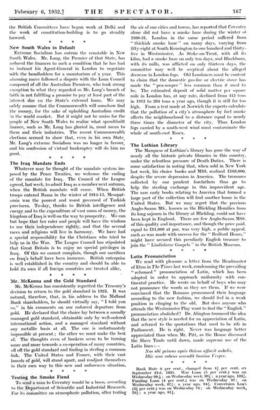Testitql the Smoke Fiend
fo send 'a Man to Co-sentry would be a boon, according to the Department of Scientific and Industrial Research. For its committee on atmospheric pollution, after testing the air of our cities and towns, has reported that Coventry alone did not have a smoke haze during the winter ol- 1930-31. London in the same period suffered from "thickish smoke haze " on many days, varying from fifty-eight at South Kensington to one hundred and thirty- five in Westminster. As Stoke-on-Trent, with all its kilns, had a smoke haze on only ten days, and Blackburn, with its mills, was afflicted on only thirteen days, the committee may well be sceptical about the alleged decrease in London fogs. 01(1 Londoners t be content to claim that the domestic gas-fire or electric stove has made the " pea-souper ". less common than it used to be. The estimated deposit of solid matter per square. mile in London has, at any rate, declined from 415 tons in 1915 to 264 tons a year ago, though it is still far too high. From a test made at Norwich the experts calculate that the pollution of a city's atmosphere by fuel smoke affects the neighbourhood to a distance equal to nearly. three times the diameter of the city. Thus London fogs carried by a south-west wind must contaminate the
whole of south-east Essex.








































 Previous page
Previous page